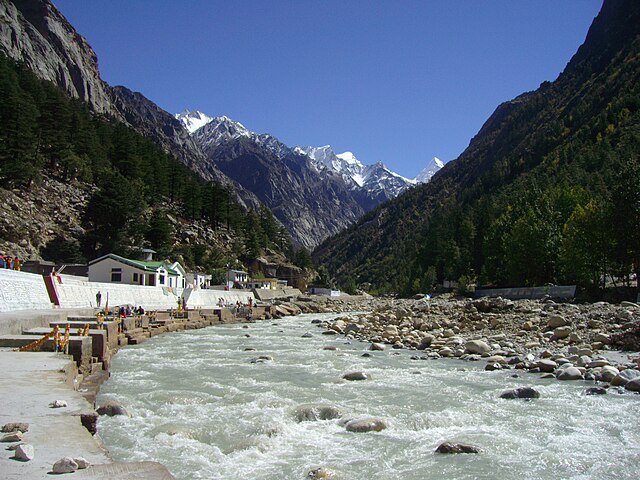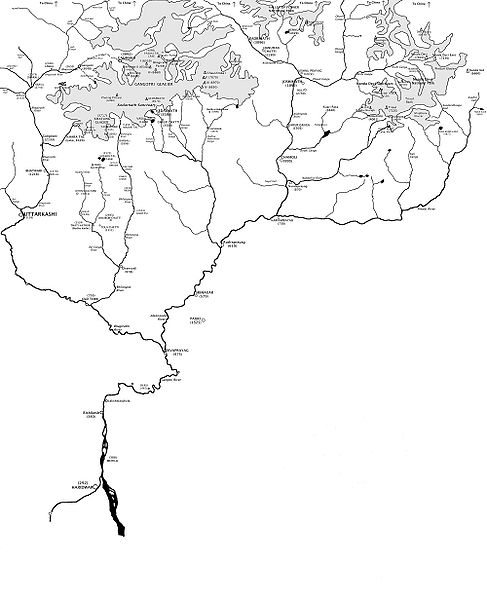Ganga is the personification of the river Ganges, who is worshipped by Hindus as the goddess of purification and forgiveness. Known by many names, Ganga is often depicted as a fair, beautiful woman, riding a divine crocodile-like creature called the makara.
19th century Kalighat painting of goddess Ganga
Image: A Devi sculpture in Sri Lanka Goddess Ganga
Image: Tara at Mul Chowk 02
Image: Angkor Thommanon 08 2007 gje
The Ganges is a trans-boundary river of Asia which flows through India and Bangladesh. The 2,525 km (1,569 mi) river rises in the western Himalayas in the Indian state of Uttarakhand. It flows south and east through the Gangetic plain of North India, receiving the right-bank tributary, the Yamuna, which also rises in the western Indian Himalayas, and several left-bank tributaries from Nepal that account for the bulk of its flow. In West Bengal state, India, a feeder canal taking off from its right bank diverts 50% of its flow southwards, artificially connecting it to the Hooghly River. The Ganges continues into Bangladesh, its name changing to the Padma. It is then joined by the Jamuna, the lower stream of the Brahmaputra, and eventually the Meghna, forming the major estuary of the Ganges Delta, and emptying into the Bay of Bengal. The Ganges–Brahmaputra–Meghna system is the second-largest river on earth by discharge.
The Ganges in Varanasi
Bhagirathi River at Gangotri.
Devprayag, confluence of Alaknanda (right) and Bhagirathi (left), and beginning of the Ganges.
The Himalayan headwaters of the Ganges River in the Garhwal region of Uttarakhand, India.








